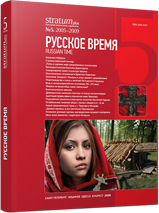Водь в западноевропейских источниках XIII-XIV века
Votians in the Western European Sources of the 13th-14th c.
Author(s): Anti SelartSubject(s): History, Middle Ages, 13th to 14th Centuries
Published by: Издательский дом Stratum, Университет «Высшая антропологическая школа»
Keywords: Votians; Finnic ethnic; Livonian; Swedish; Danish; Teutonic Order
Summary/Abstract: Votians were a Finnic ethnic group settling in the Middle Ages in the area between the Lake Peipus and the eastern part of the Gulf of Finland. They became mentioned in Latin sources since 1240s due to the Livonian, Swedish, and Danish crusading policy in the region. Then mostly pagan Votians and their neighbours (Carelians, Izhorians etc.) represented a common group of “pagan enemies”, however, and the usage was not ethnically precise. Preferred were more general terms like pagani or infideli; ethnonymes were used, if there was some competition between Catholic parties and necessity to determine the territories more exactly. At least in late 13th c. in Livonia a “list of enemies” was formed, including Carelians, Lithuanians and later also Russians. They quite widely represented these that a bull of the Pope Alexander III which mentioned Votians in the 12th c. is corrected as a misinterpretation. The first known Latin document referring to the Votian land (treaty between the Teutonic Order in Livonia and the bishop of Saaremaa) dates from 1241. A possible mission of the bishop of Carelia, Friedrich Haseldorp, is treated in the same context. It seems unlikely that Friedrich had ever visited Carelia or Votia. There is no source confirming his position as bishop of Carelia before 1268, the very same year when he was appointed as the bishop of Tartu, Livonia.
Journal: Stratum plus. Археология и культурная антропология
- Issue Year: 2009
- Issue No: 5
- Page Range: 529-538
- Page Count: 10
- Language: Russian
- Content File-PDF

